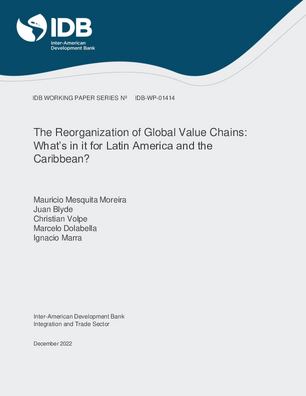The Reorganization of Global Value Chains: What’s in it for Latin America and the Caribbean?
Date
Dec 2022
As Latin America and the Caribbean bounce back from a sanitary crisis of historic proportions, the search is on for policies that can accelerate recovery while boosting long-term growth. In a scenario of tight fiscal constraints, trade and integration (T&I) policies seem to fit this description. There are particularly high expectations in some policy circles that the benefits of T&I policies will be boosted by an impending reorganization of global value chains. Yet little is known about the relevance, shape, and impacts of this reorganization. Will this lead to reshoring, nearshoring, or some slightly modified version of the status quo? Will this benefit the region? This paper takes a stab at answering these questions. It begins with a critical review of the most frequently cited drivers of the reorganization. This is then followed by an analytical exercise that uses the 20182019 US import tariff hike as a quasi-natural experiment. The results seem more consistent with modest trade and investment gains for the region, associated with incremental rather than major adjustments to global value chains. It concludes by arguing that whatever the future brings, minimizing trade and investment costs is likely to remain the regions dominant strategy.




